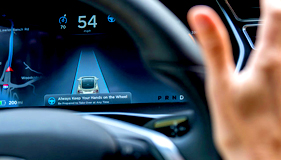Driver Blames Tesla’s Autopilot Feature for Crash
![]() Print this Article | Send to Colleague
Print this Article | Send to Colleague
 According to a report from ABC News, a Tesla driver is blaming his car's partially self-driving autopilot system for a crash in Minnesota over the weekend. David Clark, 58, was driving his Tesla Model S sedan with four passengers in Hawick, Minn., about 100 miles (160 km) northwest of Minneapolis., as indicated by the Kandiyohi County Sheriff's Office.
According to a report from ABC News, a Tesla driver is blaming his car's partially self-driving autopilot system for a crash in Minnesota over the weekend. David Clark, 58, was driving his Tesla Model S sedan with four passengers in Hawick, Minn., about 100 miles (160 km) northwest of Minneapolis., as indicated by the Kandiyohi County Sheriff's Office.Clark told deputies that when he engaged the autopilot feature, the car suddenly accelerated, left the roadway and overturned in a marsh. Clark and his passengers sustained minor injuries.
Palo Alto, Calif.-based Tesla said it's investigating and will cooperate with local authorities. Tesla said it hasn't yet established whether the vehicle's autopilot feature was engaged, but it has no reason to believe it worked other than as designed.
Autopilot automatically maintains a set speed, slows down and brakes in traffic and keeps the car within a lane. When drivers turn on the system, a message reminds them to remain engaged and be prepared to take the wheel. Drivers can take their hands off the wheel, but only for short periods. If they ignore three separate warnings to put their hands on the wheel, the system will turn off.
Federal safety regulators investigated Tesla's autopilot last year after a fatal crash in Florida. In that case, a Tesla Model S hit a tractor-trailer.
The National Highway Traffic Safety Administration said in January that it found no safety defects in the system and declined to issue a recall. The agency examined the Florida crash and others where autopilot was engaged and found that, in many cases, driver error was to blame. It also said Tesla's manuals and instructions make clear that human drivers are responsible for driving the car.
It is unclear if the agency will investigate the Minnesota crash.

